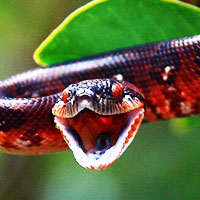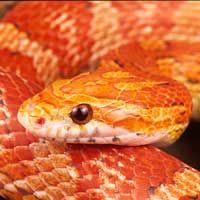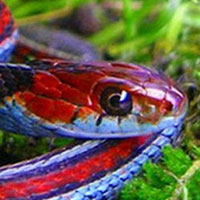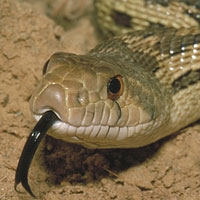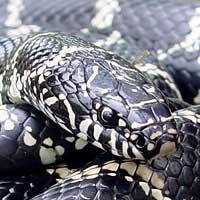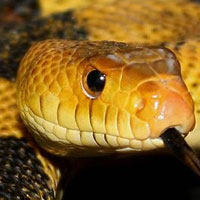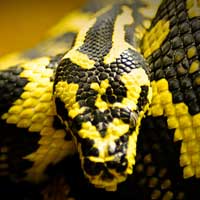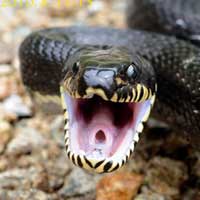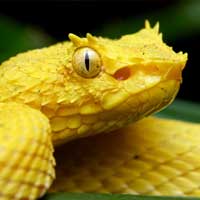Western Black Garter Snake: Everything You Need to Know
The scientific name of the Western Black Garter Snake is Thamnophis elegans. It belongs to the Colubridae family, which is the largest family of snakes and includes many non-venomous and mildly venomous species.
Scientific Name: Thamnophis elegans
Snake Family: Colubridae
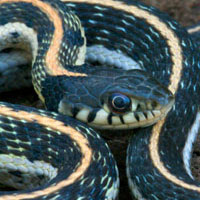
Introduction to the Western Black Garter Snake
The Western Black Garter Snake (Thamnophis elegans) is a fascinating and adaptable subspecies of the garter snake family. Known for its striking black coloration, this non-venomous snake inhabits a range of environments in western North America. Its active nature and ecological importance make it an intriguing subject for both herpetologists and nature enthusiasts.
Where Does the Western Black Garter Snake Live?
The Western Black Garter Snake thrives in diverse habitats, showcasing its ability to adapt to different climates and environments. Its range spans across the western United States, parts of Canada, and northern Mexico.
Preferred Habitat Features:
- Wetlands and marshes
- Grasslands and open fields
- Forests and riparian zones
- Suburban areas near water sources
| Region | Habitat Type | Key Features |
|---|---|---|
| Pacific Northwest | Forests and wetlands | Humid climate, abundant prey |
| Southwestern USA | Deserts and grasslands | Dry terrain with access to water |
| Rocky Mountains | Riparian zones | Streams and rocky outcrops |
What Does the Western Black Garter Snake Eat?
The Western Black Garter Snake is an opportunistic feeder, preying on a variety of animals to meet its dietary needs. This adaptability plays a critical role in its survival across diverse habitats.
Typical Diet:
- Amphibians like frogs and salamanders
- Small fish
- Earthworms and other invertebrates
- Occasionally small mammals and reptiles
In captivity, a diet of live or frozen-thawed prey, such as fish and worms, should be offered to mimic their natural feeding habits. Feeding schedules vary based on age, with juveniles requiring meals 2-3 times a week and adults feeding every 7-10 days.
Behavior and Temperament of the Western Black Garter Snake
The Western Black Garter Snake is known for its active and inquisitive behavior. As a diurnal species, it is most active during the day, exploring its surroundings and hunting for food.
Key Behavioral Traits:
- Active and curious during daylight hours
- Non-aggressive but may emit a musky odor when threatened
- Skilled swimmers
- Tolerant of a range of environmental conditions
In captivity, regular handling and interaction can help them become accustomed to human presence, making them a suitable pet for reptile enthusiasts.
Health and Lifespan of the Western Black Garter Snake
With proper care, the Western Black Garter Snake can live up to 10-15 years in captivity. Providing an optimal environment and diet is key to maintaining their health and longevity.
Common Health Concerns:
- Respiratory infections due to improper humidity levels
- Parasites, particularly in wild-caught specimens
- Shedding issues caused by low humidity
Maintain a temperature gradient of 75-85°F and provide access to clean water for hydration and soaking. Routine check-ups with a reptile veterinarian are recommended to ensure their well-being.
Reproductive Traits of the Western Black Garter Snake
The Western Black Garter Snake is viviparous, giving birth to live young. Mating typically occurs in the spring after the snakes emerge from hibernation.
Reproductive Details:
- Mating season: Spring
- Gestation period: 2-3 months
- Litter size: 5-20 neonates
- Neonates are fully independent at birth
In captivity, simulating seasonal changes in temperature and lighting can encourage breeding. Providing a stress-free environment and adequate nutrition for the breeding pair is essential.
How to Handle and Care for the Western Black Garter Snake
Caring for the Western Black Garter Snake involves creating an environment that mimics its natural habitat and providing consistent, gentle handling.
Handling and Care Tips:
- Handle gently and regularly to build trust
- Provide an enclosure with hiding spots and climbing structures
- Maintain a suitable temperature gradient and humidity levels
- Offer a varied diet to meet nutritional needs
With the right care and attention, the Western Black Garter Snake can thrive in captivity, offering reptile enthusiasts a fascinating and low-maintenance companion.
Other Snakes In This Species
 Black-necked Garter Snake
Black-necked Garter Snake Blue Striped Garter Snake
Blue Striped Garter Snake Bluestripe Ribbon Snake
Bluestripe Ribbon Snake Bullsnake
Bullsnake Butlers Garter Snake
Butlers Garter Snake Checkered Garter Snake
Checkered Garter Snake Eastern Garter Snake
Eastern Garter Snake Mexican Garter Snake
Mexican Garter Snake New Mexican Garter Snake
New Mexican Garter Snake Northwestern Garter Snake
Northwestern Garter Snake Peninsula Ribbon Snake
Peninsula Ribbon Snake Plains Garter Snake
Plains Garter Snake Red-sided Garter Snake
Red-sided Garter Snake Wandering Garter Snake
Wandering Garter Snake Western Black Garter Snake
Western Black Garter Snake Western Ribbon Snake
Western Ribbon Snake
